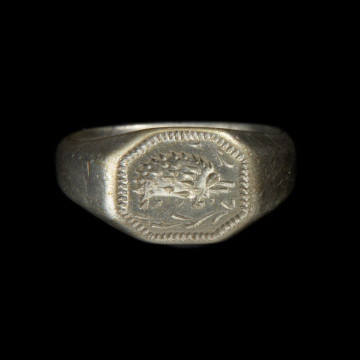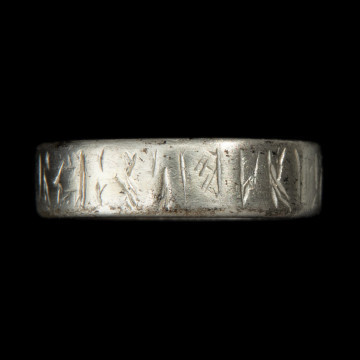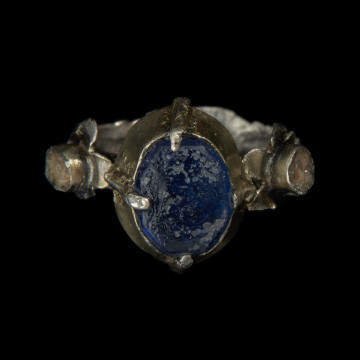
Signet ring with hedgehog
przełom XIV i XV wieku
National Museum in Szczecin
Part of the collection: Jewels and costumes of Pomeranian dukes
Due to their unusual, intense blue or blue-green colour, turquoise has been used in jewellery since antiquity. Its most extensive and highest quality deposits are found in ancient Persia (now Iran). Since the Middle Ages, Persian turquoise came to Europe along the route leading through Turkey; hence its name meant Turkish stone. They were attributed with unique properties as they were supposed to protect their owner from misfortunes and illnesses. It was believed that the stone changed its shade under the influence of the illness of a person wearing it.A ring with a large, intense blue, slightly veined turquoise in a densely puckered setting was excavated in 1946 from the Pomeranian Duke Francis I's sarcophagus, from the crypt of the Castle Church in Szczecin. It was mentioned in the description of the outfit in which the Duke was buried, and it is also visible in Francis's posthumous portrait from the Cathedral in Merseburg. The Duke wore it on the index finger of his right hand. The rail of the ring is interestingly shaped, and its ends capturing the cabochon setting are composed of floral motifs that, when viewed from the side, resemble the mouths of fantastic animals. Rings with turquoise were not uncommon at the Pomeranian court. They are mentioned in the inventories of ducal jewels; a large ring with a blue oval stone is also visible in the portrait of Duke Philip I (grandfather of Francis I) in the Szczecin Museum's collection, painted in 1541 by Lucas Cranach the Younger.
Monika Frankowska-Makała
Author / creator
Dimensions
cały obiekt: height: 3,2 cm, width: 2,9 cm
Object type
ring (jewellery), jewellery
Creation time / dating
Creation / finding place
Identification number
Location / status

przełom XIV i XV wieku
National Museum in Szczecin

przełom XIV i XV wieku
National Museum in Szczecin

National Museum in Szczecin
DISCOVER this TOPIC
Museum of King Jan III's Palace at Wilanów
DISCOVER this PATH
Educational path